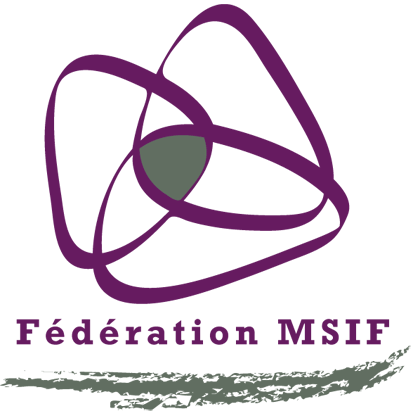Orateur
Prof.
Sylvie Ricard-Blum
(Team Extracellular interaction Network, UMR 5086 CNRS - University Lyon 1, France)
Description
Twenty-eight collagen types have been identified so far in mammals and all of them contain a triple-helical domain, which is a characteristic feature of the collagen superfamily. The triple-helical domains of collagens are comprised of three polypeptide chains, called chains, which adopt a left-handed polyproline II helix conformation. These chains are predicted to be intrinsically disordered and the sequences folded into a polyproline II helix are the major sources of disorder (Peysselon et al., Mol Biosyst 2011 7:3353-65). The triple helix motif has an inherent plasticity in native, trimeric, collagen molecules. Indeed collagen triple helices tolerate significant local changes in helical twist to respond to sequence variability, imino acid content and Gly-X-Gly interruptions. These interruptions define regions of flexibility and molecular plasticity, which may result in kinks or bends visible in electron microscopy. A macroscopic model for this plasticity is a three-stranded rope that can be twisted or relaxed locally. This rope may react differently to torque forces along its length, with perhaps local “rigid” spots at which further twisting (or relaxing) may not be feasible (Bella et al., J. Mol. Biol. 2006 362:298-311).
Several collagen types form fibrils (15-500 nm in diameter), which show a banding pattern with a periodicity of 64-67 nm (Ricard-Blum, Cold Spring Harb Perspect Biol 2011 3:a004978). Collagen fibers are covalently cross-linked in vivo via the lysyl oxidase pathway (Eyre et al., Methods. 2008 45:65-74) and by glycation. Collagen cross-linking modulates the stiffness and mechanical properties (e.g. resistance to traction) of tissues.
Tensile overload causes discrete plasticity in collagen fibrils. With successive overload cycles, fibrils develop an increasing number of kinks along their length. These kinks-discrete zones of plastic deformation known to contain denatured collagen molecules-are accompanied by a progressive and eventual total loss of D-banding along the surface of fibrils, indicating a loss of native molecular packing and further molecular denaturation. The nanostructural motif characteristic of overloaded collagen fibrils is referred to as discrete plasticity (Veres et al., J Orthop Res 2013 31:731-7). Intrafibrillar plasticity through mineral/collagen sliding is the dominant mechanism for the extreme toughness of antler bone (Gupta et al., J Mech Behav Biomed Mater. 2013 28:366-82). Upon aging the increased stiffness of collagen affects the bone ability to plastically deform by fibrillar sliding, which then must be accommodated at higher structural levels, by increased microcracking (Zimmermann et al., Proc Natl Acad Sci USA 2011 108:14416-21). Fiber alignment and densification occur as a function of applied strain for both uncrosslinked and crosslinked collagenous networks. This alignment is irreversibly imprinted in uncross-linked collagen networks. Fibril-fibril junctions are likely to be where plastic deformation occurs, allowing fibrils to slide with respect to one another and thus inducing irreversible changes in the uncross-linked network topology (Vader et al., 2009 PLoS One 4:e5902). When adherent to damaged collagen fibrils, the cells clustered less, showed ruffled membranes, and frequently spread, increasing their contact area with the damaged substrate. There was clear structural evidence of pericellular enzymolysis of damaged collagen (Veres et al., J Biomed Mater Res A. 2014 Mar 10). Atomistic-based hierarchical multiscale modeling has been recently applied to investigate the source of visco-elasticity and deformation mechanisms of collagen at the nanoscale level (Vesentini et al., Muscles, Ligaments and Tendons Journal 2013 3: 23-34). The availability of a model may lead to the design of new biomaterials for regenerative medicine.
Auteur
Prof.
Sylvie Ricard-Blum
(Team Extracellular interaction Network, UMR 5086 CNRS - University Lyon 1, France)

